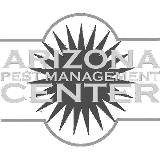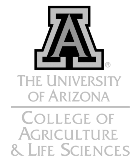-
Jul 2020Many factors must be considered when choosing an insecticide, such as cost, efficacy, risk of resistance, and safety to non-target organisms. This Cotton Insecticide Use Guide summarizes the diverse risks of insecticides used to control three pests, helping you make well informed pest management decisions.
-
Jun 2020Cotton insecticide target efficacy, impact on non-target arthropods and other pesticide risks.
-
Jun 2020La guía del inspector acompañante para “Making Whitefly & Predator Counts”. Esta guía portátil proporciona instrucciones para el muestreo de mosca blanca y predators. La tablas proporcionan una guía para tomar decisiones sobre cuando fumigar para manejar eficazmente mosca blanca. Disponible tanto en inglés como en español.
-
May 2020Cotton fleahoppers are present in cotton during early squaring but rarely require chemical control. These piercing-sucking pests feed on small squares and new terminal growth. Cotton at early squaring is at risk for losing fruiting sites due to blasting of small squares, which can delay timeliness of fruiting, however, yield loss is rare.
-
Apr 2020False chinch bug nymphs, not adults, contribute to significant early-season stand loss in cotton. Best management practices include timely removal of weeds from surrounding fallow or wasteland areas. Chemical control of nymphs should only be considered during mass migrations when abundant false chinch bugs occur per plant, only where they are entering the field plus 50 feet further into the field, and usually only as a banded application over the crop.
-
Jun 2019The companion visor guide to “Making Whitefly & Predator Counts”. This portable guide provides instructions for sampling both whiteflies and their predators. Tables provide a guide for making spray decisions to effectively manage whiteflies. English version.
-
May 2019Off target movement of the auxin herbicides, 2,4-D and dicamba, will cause substantial injury to downwind, sensitive crops such as cotton, grapes, melons and other broadleaf plants. This publication provides guidelines for preventing off target movement.
-
May 2019Spray Legally: Summary of Enlist™, Engenia® and Xtendimax® Application Use Requirements on Cotton (PDF, 1 MB)This publication summarizes best use practices and label requirements for auxin herbicides.
-
Jan 2019Understanding levels of key predators in the field can help you make more confident whitefly spray decisions. New research has identified critical levels of predators that impact economic spray decisions for whiteflies. By monitoring the number of key predators in the field when whiteflies are at or approaching standard whitefly thresholds, pest managers may confidently defer sprays, or alternately, may wish to advance a spray prior to reaching threshold, based on predator population levels.
-
Jan 2019Biological control can be incorporated into whitefly management by sampling 4 key predators and comparing them to whitefly populations. High ratios of predators to whiteflies indicate control and may defer a control spray. Low ratios indicate a lack of control and may advance a whitefly spray.
-
Jul 2014Learn more about the relationship between 4 key predators and whitefly bio-control in the cotton system.
-
Jun 2014Orius spp. (Family Anthocoridae) are valuable natural enemies in cotton and abundant throughout the season. These predators have a large impact on various cotton pests and can be used as an indicator of the natural enemy community's ability to suppress whiteflies.
-
Jun 2014Spiders can play an important role in Arizona crop fields, contributing to the biological control of pest insects. Crab Spiders, Misumenops celer, are particularly good indicators of the natural enemy community's ability to suppress whiteflies.
-
Jun 2013Root knot nematode is the only economically important nematode pest of cotton. This IPM Short describes how to sample soils for the presence of this pest.
-
Aug 2012Brown Stink Bugs (BSB), rarely economic pests of Arizona cotton, are widely reported this year and can be quite damaging. Arizona research confirms that sweep net sampling is ineffective for assessing BSB levels! This IPM Short provides very effective sampling procedures. Management guidelines for AZ are unavailable, but stink bug efficacy information from the Southeastern U.S. is included for consideration.
-
Aug 2012Fuera del Radar, Escondidas en el Follaje Chinches Apestosas Cafés en Algodón de Arizona (PDF, 2 MB)A Spanish language version of "Under the Radar, Deep in the Canopy Brown Stink Bugs in Arizona Cotton"
-
Jul 2012This is a guide to terminating Lygus Controls. It aims to help you know when you should consider stopping your chemical control.
-
Jul 2012¿Aplicar o No Aplicar?, He Ahí el Dilema Guía para finalizar el control de Lygus
-
Jul 2012An illustrated guide to the rapid and efficient sampling of sweetpotato whiteflies (Bemisia tabaci) in cotton.


























